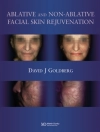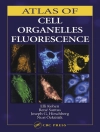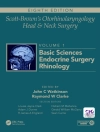FOUR STARS from Doody’s Star Ratings™
HIGHLY COMMENDED by the BMA Medical Book Awards for Surgery!
Rhinoplasty is one of the most challenging operations in aesthetic plastic surgery. Not only is it technically difficult as no two noses are the same, surgical decision making plays an absolutely critical part. Unpredictable post-operative healing, natural facial asymmetry, and high patient expectations lead to a high incidence of secondary (revision) operations. With contributions from a truly outstanding, international list of experts, this two-volume set covers operative principles and includes the personal techniques of nearly 50 experts. The books are liberally illustrated with color photos and artwork. Also included are the e-book version, as well as 13 hours of surgical video, presented in 120 tightly-edited clips and showcasing 30 full procedures.
विषयसूची
VOLUME I
Part One Perioperative Concepts
1 Why Primary Rhinoplasty Fails
2 Preoperative Evaluation and Patient Selection
3 Systematic Nasal Analysis and Common Deformities in Secondary Rhinoplasty
4 Postoperative Care and Management of Complications
5 Soft Tissue Fillers in Secondary Rhinoplasty
Part Two Surgical Concepts
6 Secondary Rhinoplasty: A Guide to Consistent and Reproducible Success
7 Understanding the Anatomy of Nasal Deformities in Secondary Rhinoplasty
8 Restoring the Nasal Airway During Secondary Rhinoplasty
9 Grafting Materials in Secondary Rhinoplasty
Part Three The Approach
10 Choosing the Approach in Secondary Rhinoplasty
11 The Open Approach in Secondary Rhinoplasty
Part Four The Nasal Dorsum
12 Managing Secondary Deformities of the Nasal Dorsum
13 Nasal Osteotomies for Secondary Deformities
Part Five The Nasal Tip
14 Altering Tip Rotation and Projection
15 Tip Reshaping in Secondary Rhinoplasty
Part Six The Alar Rims and Columella
16 Correcting the Alar-Columellar Relationship
17 Restoring the Alar Rims and Soft Tissue Triangles in Secondary Rhinoplasty
18 Correcting Columellar Deformities
Part Seven The Alar Base
19 Alar Base Surgery: Correction of Secondary Deformities
20 Altering the Nostrils: Correcting Nostril Deformities
Part Eight The Nasal Airway
21 The External and Internal Nasal Valves
22 Septal Deformities in Secondary Rhinoplasty
23 Managing the Nasal Turbinates
Part Nine Nasal Reconstruction
24 Secondary Cleft Rhinoplasty
25 Optimizing Timing and Refining Cleft Rhinoplasty
26 Principles of Nasal Reconstruction With the Three-Stage Paramedian Forehead Flap
27 Secondary Reconstructive Rhinoplasty in Patients With a Cleft
28 A Modern Approach to Nasal Reconstruction
29 A Progressive Approach to Nasal Reconstruction
Part Ten Personal Approaches to Secondary Rhinoplasty
30 Redefining Finesse in Secondary Rhinoplasty
31 Understanding the Psychological Aspects of the Secondary Rhinoplasty Patient
32 The Role of Rib Grafts in Secondary Rhinoplasty
33 Reconstruction of the Overresected Nose
34 Refinements in Secondary Rhinoplasty
35 Closed Approach to Secondary Rhinoplasty
VOLUME II
36 Refinement and Finesse in Secondary Rhinoplasty
37 Injectable and Surgicel-Wrapped Diced Cartilage in Secondary Rhinoplasty
38 Key Techniques in Secondary Rhinoplasty
39 Secondary Surgery of the Septum and Tip
40 Common Secondary Nose Flaws and Their Logical Corrections
41 A Graduated Approach to Secondary Rhinoplasty Using the Open and Closed Approaches
42 Approach to Asian Secondary Rhinoplasty With Autologous Grafts or Alloplastic Implants
43 Managing Common Deformities in Asian Secondary Rhinoplasty
44 Reshaping the Nasal Framework in Secondary Rhinoplasty
45 Finesse in Managing the Secondary Persian Nose
46 Managing Common Deformities During Secondary Rhinoplasty
47 The Closed Approach as an Effective and Predictable Solution
48 The Role of Soft Tissue Cover in Secondary Rhinoplasty
49 Nonsurgical Secondary Rhinoplasty
50 The Role of the Closed Approach in Secondary Rhinoplasty
51 Minimizing Risk in Secondary Rhinoplasty
52 A Systematic Approach to Secondary Rhinoplasty
53 Achieving Consistent Results in Secondary Rhinoplasty
54 Secondary Rhinoplasty: Analysis and Pitfalls of Approach
55 A Goal-Oriented Approach to Secondary Rhinoplasty
56 Optimizing Results in Secondary Rhinoplasty
57 The Role of Preoperative Planning in Secondary Rhinoplasty
58 Achieving Balance in Secondary Rhinoplasty
59 Open Approach to Manage Complex Secondary Middle Eastern Nasal Deformities
60 Advances in the Management of the Secondary Rhinoplasty Patient
61 Balancing the Open and Closed Approaches to Secondary Rhinoplasty
62 Open Structural Approach to Secondary Rhinoplasty
63 Understanding Options in Secondary Rhinoplasty
64 Achieving Facial Balance in Asian Secondary Rhinoplasty












